6 things to know about skiing in Japan
Japan is unlike any other country on the planet, and one that has carefully preserved and protected its culture, history and identity through the ages. It is therefore no surprise that skiing in Japan has it`s own nuances and unique charm. Here are a few `good to know` things about skiing in Japan.
1. Its powder fame is well deserved
Not only does Japan have the most ski resorts in the world – with over 500 – but it is also home to the snowiest place on earth. Typically Hokkaido gets more snow than Honshu, but thanks to cold winds from Siberia and moisture collected from the Sea of Japan – both islands get plenty of snow every year. For experienced powder riders this is a dream come true with bottomless snow both on and off piste, and great terrain to boot. In this regard it is hard to beat Japan as a ski destination.
 For those less familiar with deep snow or skiing in general, it can be unnerving or even frustrating. Due to the rapid rate of snowfall it is not uncommon to have a foot or two of fresh snow on even the groomed or beginner areas, and it can also mean colder conditions with less sunshine during December, January and February. Therefore, beginners and those with young families may want to c take a lesson or two to master the basics, make sure they dress appropriately for the conditions or even consider planning a trip later in the season when the conditions are kinder. As a general rule Hokkaido is colder than Honshu.
2. Don’t skip the onsen (Japanese hot spring)
Slide into the warm water and immerse yourself in hundreds of years of Japanese tradition. As a highly volcanically active country Japan has thousands of onsens scattered across its islands, many of which are centuries old. Once significant in Buddhism for cleansing the body, they are often steeped in myth and legend and are today cornerstone of both traditional and modern accommodations. Now gender separated, they do require you to be nude when bathing and adhere to onsen etiquette, which is to thoroughly wash before entering the bath and only bring a small modesty towel or wash cloth in the bath area – and not into the bath itself. That being said, it is well worth pushing past any nudity scepticism as few things compare to sinking into the warm, mineral rich waters after a day on the slopes.
For those less familiar with deep snow or skiing in general, it can be unnerving or even frustrating. Due to the rapid rate of snowfall it is not uncommon to have a foot or two of fresh snow on even the groomed or beginner areas, and it can also mean colder conditions with less sunshine during December, January and February. Therefore, beginners and those with young families may want to c take a lesson or two to master the basics, make sure they dress appropriately for the conditions or even consider planning a trip later in the season when the conditions are kinder. As a general rule Hokkaido is colder than Honshu.
2. Don’t skip the onsen (Japanese hot spring)
Slide into the warm water and immerse yourself in hundreds of years of Japanese tradition. As a highly volcanically active country Japan has thousands of onsens scattered across its islands, many of which are centuries old. Once significant in Buddhism for cleansing the body, they are often steeped in myth and legend and are today cornerstone of both traditional and modern accommodations. Now gender separated, they do require you to be nude when bathing and adhere to onsen etiquette, which is to thoroughly wash before entering the bath and only bring a small modesty towel or wash cloth in the bath area – and not into the bath itself. That being said, it is well worth pushing past any nudity scepticism as few things compare to sinking into the warm, mineral rich waters after a day on the slopes.
 3. Food – embrace the local eats
Depending on the resort and area of Japan, there may be a limited or large array of food choices available. In many cases – particularly in the smaller resorts – the best food is the local Japanese cuisine. Those looking for quality western dishes, particularly on the mountain, may find them to be elusive or disappointing, especially in contrast to the depth of flavour found in a hearty bowl of ramen or the fresh subtitles of sushi. This is the occasion to be adventurous with food and explore the culinary delights that Japan has to offer; try everyday dishes like ramen, soba, tonkatsu and okonomiyaki for lunches or light bites, and enjoy more luxurious dining experiences such as well recommended wagyu or kaiseki for your evening meals.
3. Food – embrace the local eats
Depending on the resort and area of Japan, there may be a limited or large array of food choices available. In many cases – particularly in the smaller resorts – the best food is the local Japanese cuisine. Those looking for quality western dishes, particularly on the mountain, may find them to be elusive or disappointing, especially in contrast to the depth of flavour found in a hearty bowl of ramen or the fresh subtitles of sushi. This is the occasion to be adventurous with food and explore the culinary delights that Japan has to offer; try everyday dishes like ramen, soba, tonkatsu and okonomiyaki for lunches or light bites, and enjoy more luxurious dining experiences such as well recommended wagyu or kaiseki for your evening meals.
 4. It`s surprisingly inexpensive
Contrary to popular belief or high living in Tokyo, Japanese ski resorts are not as expensive as one might expect. Typically Niseko is pricier and more developed than most resort on Honshu, but lift tickets, on mountain food and transportation is reasonable across all areas. In fact, a lift ticket on Honshu is about half of what you would pay for a lift ticket in North America or Australia, with many resorts offering heavily discounted or free tickets for kids under 5. Though getting to Japan is likely no small thing, skiing is affordable once there, and even eating out or buying food in is reasonable. You can find a decent lunch or evening meal for under $20 AUD per person, and as a non tipping culture the price is as it seems. Accommodation however is comparable to what you’d pay elsewhere, and many Japanese accommodations charge per person instead of per room.
4. It`s surprisingly inexpensive
Contrary to popular belief or high living in Tokyo, Japanese ski resorts are not as expensive as one might expect. Typically Niseko is pricier and more developed than most resort on Honshu, but lift tickets, on mountain food and transportation is reasonable across all areas. In fact, a lift ticket on Honshu is about half of what you would pay for a lift ticket in North America or Australia, with many resorts offering heavily discounted or free tickets for kids under 5. Though getting to Japan is likely no small thing, skiing is affordable once there, and even eating out or buying food in is reasonable. You can find a decent lunch or evening meal for under $20 AUD per person, and as a non tipping culture the price is as it seems. Accommodation however is comparable to what you’d pay elsewhere, and many Japanese accommodations charge per person instead of per room.
 5. It`s still a cash culture
Though you may think of Japan as being highly technologically advanced, and leading the way for lifestyle efficiency with its bullet trains and talking toilets – there are still ways in which it is behind. While credit cards are widely accepted, it is never safe to assume that the establishment you are frequenting does accept them. This is especially true for smaller business in smaller resorts, such as family run onsens or restaurants, but it can still catch you out even in the cities. Therefore, make sure you travel with cash and know where the closest ATM that will accept your card is – as well as it`s operating hours. Seven Eleven almost always has an international ATM, and most Post Offices do too – though the hours on the machines themselves can be restrictive, as can the amount that can be withdrawn within 24 hours. Fortunately, Japan has one of the world’s lowest crime rates and is incredibly safe, so travelling with cash on your person is very rarely an issue.
5. It`s still a cash culture
Though you may think of Japan as being highly technologically advanced, and leading the way for lifestyle efficiency with its bullet trains and talking toilets – there are still ways in which it is behind. While credit cards are widely accepted, it is never safe to assume that the establishment you are frequenting does accept them. This is especially true for smaller business in smaller resorts, such as family run onsens or restaurants, but it can still catch you out even in the cities. Therefore, make sure you travel with cash and know where the closest ATM that will accept your card is – as well as it`s operating hours. Seven Eleven almost always has an international ATM, and most Post Offices do too – though the hours on the machines themselves can be restrictive, as can the amount that can be withdrawn within 24 hours. Fortunately, Japan has one of the world’s lowest crime rates and is incredibly safe, so travelling with cash on your person is very rarely an issue.
 6. A little goes a long way with the language
In the same way that you shouldn`t assume your credit card will be accepted everywhere, you also should not assume that everyone will speak at least a little English. While many Japanese residents may have a basic level of English, there are many that don’t; or don’t feel confident to use it. What will help you is knowing a minimum of 2 or 3 words or phrases so that at the least you are able to be polite. As with most places in the world people are more likely to want to help you when you show some effort of trying. `Arigato` – thank you, `onegaishimasu` – please and `sumimasen` – excuse me – are 3 words to get you started.
Nadine Robb is Owner and Instructor at Hakuba Ski Concierge. Hakuba Ski Concierge is a boutique ski school in Hakuba, Japan.
If you would like to be a guest blogger on A Luxury Travel Blog in order to raise your profile, please contact us.
6. A little goes a long way with the language
In the same way that you shouldn`t assume your credit card will be accepted everywhere, you also should not assume that everyone will speak at least a little English. While many Japanese residents may have a basic level of English, there are many that don’t; or don’t feel confident to use it. What will help you is knowing a minimum of 2 or 3 words or phrases so that at the least you are able to be polite. As with most places in the world people are more likely to want to help you when you show some effort of trying. `Arigato` – thank you, `onegaishimasu` – please and `sumimasen` – excuse me – are 3 words to get you started.
Nadine Robb is Owner and Instructor at Hakuba Ski Concierge. Hakuba Ski Concierge is a boutique ski school in Hakuba, Japan.
If you would like to be a guest blogger on A Luxury Travel Blog in order to raise your profile, please contact us.
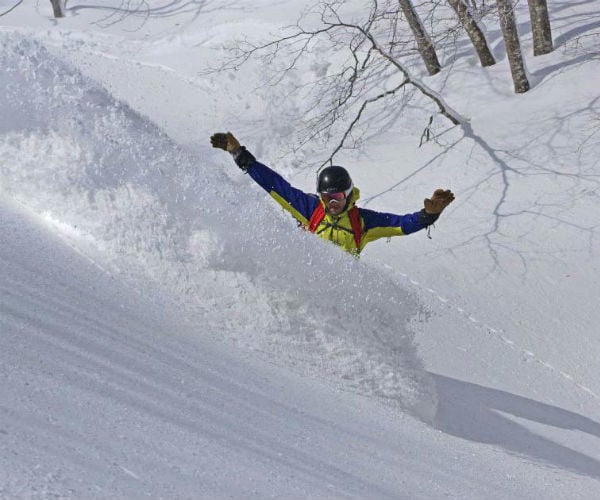 For those less familiar with deep snow or skiing in general, it can be unnerving or even frustrating. Due to the rapid rate of snowfall it is not uncommon to have a foot or two of fresh snow on even the groomed or beginner areas, and it can also mean colder conditions with less sunshine during December, January and February. Therefore, beginners and those with young families may want to c take a lesson or two to master the basics, make sure they dress appropriately for the conditions or even consider planning a trip later in the season when the conditions are kinder. As a general rule Hokkaido is colder than Honshu.
2. Don’t skip the onsen (Japanese hot spring)
Slide into the warm water and immerse yourself in hundreds of years of Japanese tradition. As a highly volcanically active country Japan has thousands of onsens scattered across its islands, many of which are centuries old. Once significant in Buddhism for cleansing the body, they are often steeped in myth and legend and are today cornerstone of both traditional and modern accommodations. Now gender separated, they do require you to be nude when bathing and adhere to onsen etiquette, which is to thoroughly wash before entering the bath and only bring a small modesty towel or wash cloth in the bath area – and not into the bath itself. That being said, it is well worth pushing past any nudity scepticism as few things compare to sinking into the warm, mineral rich waters after a day on the slopes.
For those less familiar with deep snow or skiing in general, it can be unnerving or even frustrating. Due to the rapid rate of snowfall it is not uncommon to have a foot or two of fresh snow on even the groomed or beginner areas, and it can also mean colder conditions with less sunshine during December, January and February. Therefore, beginners and those with young families may want to c take a lesson or two to master the basics, make sure they dress appropriately for the conditions or even consider planning a trip later in the season when the conditions are kinder. As a general rule Hokkaido is colder than Honshu.
2. Don’t skip the onsen (Japanese hot spring)
Slide into the warm water and immerse yourself in hundreds of years of Japanese tradition. As a highly volcanically active country Japan has thousands of onsens scattered across its islands, many of which are centuries old. Once significant in Buddhism for cleansing the body, they are often steeped in myth and legend and are today cornerstone of both traditional and modern accommodations. Now gender separated, they do require you to be nude when bathing and adhere to onsen etiquette, which is to thoroughly wash before entering the bath and only bring a small modesty towel or wash cloth in the bath area – and not into the bath itself. That being said, it is well worth pushing past any nudity scepticism as few things compare to sinking into the warm, mineral rich waters after a day on the slopes.
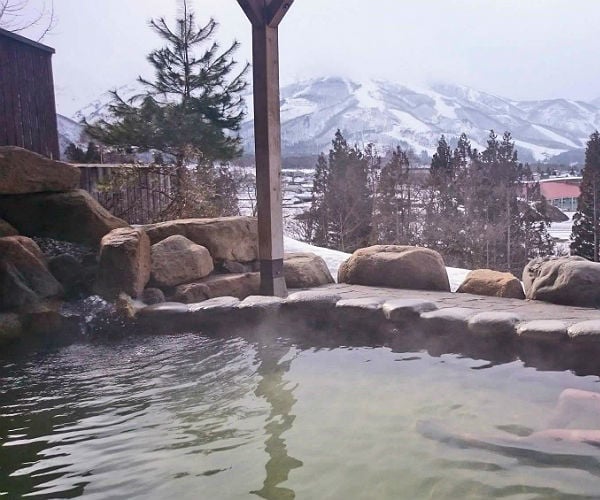 3. Food – embrace the local eats
Depending on the resort and area of Japan, there may be a limited or large array of food choices available. In many cases – particularly in the smaller resorts – the best food is the local Japanese cuisine. Those looking for quality western dishes, particularly on the mountain, may find them to be elusive or disappointing, especially in contrast to the depth of flavour found in a hearty bowl of ramen or the fresh subtitles of sushi. This is the occasion to be adventurous with food and explore the culinary delights that Japan has to offer; try everyday dishes like ramen, soba, tonkatsu and okonomiyaki for lunches or light bites, and enjoy more luxurious dining experiences such as well recommended wagyu or kaiseki for your evening meals.
3. Food – embrace the local eats
Depending on the resort and area of Japan, there may be a limited or large array of food choices available. In many cases – particularly in the smaller resorts – the best food is the local Japanese cuisine. Those looking for quality western dishes, particularly on the mountain, may find them to be elusive or disappointing, especially in contrast to the depth of flavour found in a hearty bowl of ramen or the fresh subtitles of sushi. This is the occasion to be adventurous with food and explore the culinary delights that Japan has to offer; try everyday dishes like ramen, soba, tonkatsu and okonomiyaki for lunches or light bites, and enjoy more luxurious dining experiences such as well recommended wagyu or kaiseki for your evening meals.
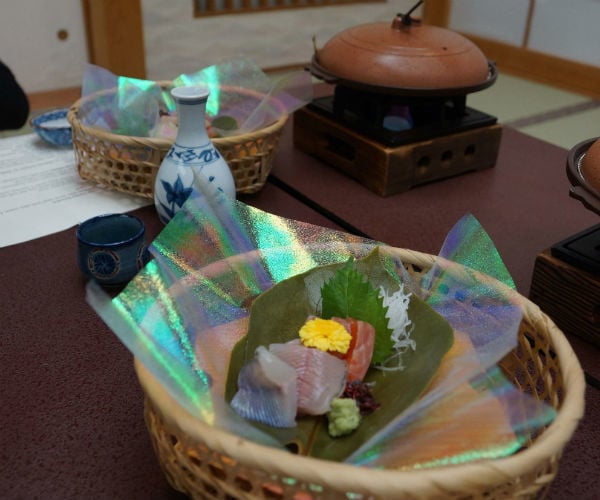 4. It`s surprisingly inexpensive
Contrary to popular belief or high living in Tokyo, Japanese ski resorts are not as expensive as one might expect. Typically Niseko is pricier and more developed than most resort on Honshu, but lift tickets, on mountain food and transportation is reasonable across all areas. In fact, a lift ticket on Honshu is about half of what you would pay for a lift ticket in North America or Australia, with many resorts offering heavily discounted or free tickets for kids under 5. Though getting to Japan is likely no small thing, skiing is affordable once there, and even eating out or buying food in is reasonable. You can find a decent lunch or evening meal for under $20 AUD per person, and as a non tipping culture the price is as it seems. Accommodation however is comparable to what you’d pay elsewhere, and many Japanese accommodations charge per person instead of per room.
4. It`s surprisingly inexpensive
Contrary to popular belief or high living in Tokyo, Japanese ski resorts are not as expensive as one might expect. Typically Niseko is pricier and more developed than most resort on Honshu, but lift tickets, on mountain food and transportation is reasonable across all areas. In fact, a lift ticket on Honshu is about half of what you would pay for a lift ticket in North America or Australia, with many resorts offering heavily discounted or free tickets for kids under 5. Though getting to Japan is likely no small thing, skiing is affordable once there, and even eating out or buying food in is reasonable. You can find a decent lunch or evening meal for under $20 AUD per person, and as a non tipping culture the price is as it seems. Accommodation however is comparable to what you’d pay elsewhere, and many Japanese accommodations charge per person instead of per room.
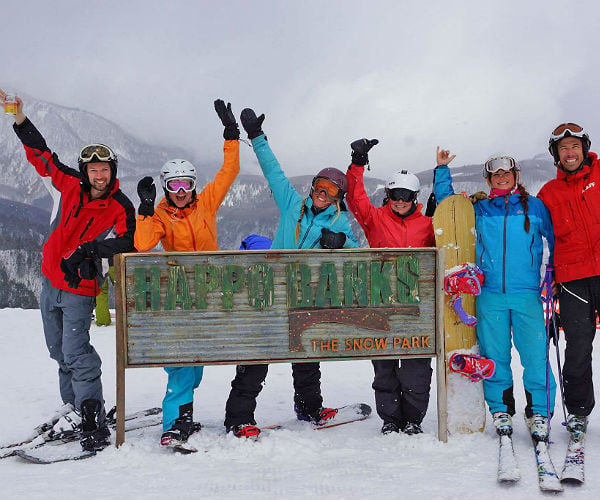 5. It`s still a cash culture
Though you may think of Japan as being highly technologically advanced, and leading the way for lifestyle efficiency with its bullet trains and talking toilets – there are still ways in which it is behind. While credit cards are widely accepted, it is never safe to assume that the establishment you are frequenting does accept them. This is especially true for smaller business in smaller resorts, such as family run onsens or restaurants, but it can still catch you out even in the cities. Therefore, make sure you travel with cash and know where the closest ATM that will accept your card is – as well as it`s operating hours. Seven Eleven almost always has an international ATM, and most Post Offices do too – though the hours on the machines themselves can be restrictive, as can the amount that can be withdrawn within 24 hours. Fortunately, Japan has one of the world’s lowest crime rates and is incredibly safe, so travelling with cash on your person is very rarely an issue.
5. It`s still a cash culture
Though you may think of Japan as being highly technologically advanced, and leading the way for lifestyle efficiency with its bullet trains and talking toilets – there are still ways in which it is behind. While credit cards are widely accepted, it is never safe to assume that the establishment you are frequenting does accept them. This is especially true for smaller business in smaller resorts, such as family run onsens or restaurants, but it can still catch you out even in the cities. Therefore, make sure you travel with cash and know where the closest ATM that will accept your card is – as well as it`s operating hours. Seven Eleven almost always has an international ATM, and most Post Offices do too – though the hours on the machines themselves can be restrictive, as can the amount that can be withdrawn within 24 hours. Fortunately, Japan has one of the world’s lowest crime rates and is incredibly safe, so travelling with cash on your person is very rarely an issue.
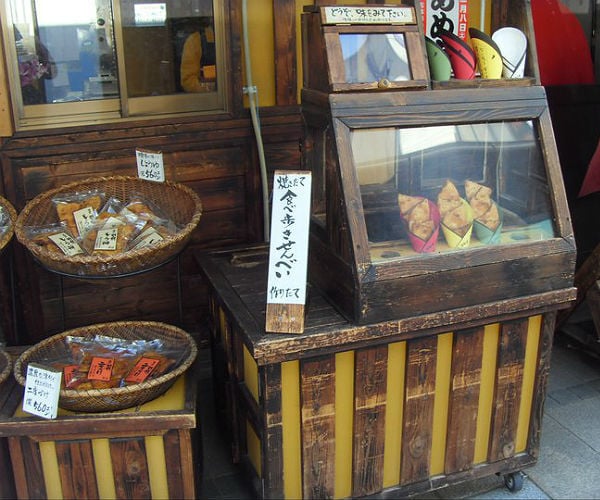 6. A little goes a long way with the language
In the same way that you shouldn`t assume your credit card will be accepted everywhere, you also should not assume that everyone will speak at least a little English. While many Japanese residents may have a basic level of English, there are many that don’t; or don’t feel confident to use it. What will help you is knowing a minimum of 2 or 3 words or phrases so that at the least you are able to be polite. As with most places in the world people are more likely to want to help you when you show some effort of trying. `Arigato` – thank you, `onegaishimasu` – please and `sumimasen` – excuse me – are 3 words to get you started.
Nadine Robb is Owner and Instructor at Hakuba Ski Concierge. Hakuba Ski Concierge is a boutique ski school in Hakuba, Japan.
If you would like to be a guest blogger on A Luxury Travel Blog in order to raise your profile, please contact us.
6. A little goes a long way with the language
In the same way that you shouldn`t assume your credit card will be accepted everywhere, you also should not assume that everyone will speak at least a little English. While many Japanese residents may have a basic level of English, there are many that don’t; or don’t feel confident to use it. What will help you is knowing a minimum of 2 or 3 words or phrases so that at the least you are able to be polite. As with most places in the world people are more likely to want to help you when you show some effort of trying. `Arigato` – thank you, `onegaishimasu` – please and `sumimasen` – excuse me – are 3 words to get you started.
Nadine Robb is Owner and Instructor at Hakuba Ski Concierge. Hakuba Ski Concierge is a boutique ski school in Hakuba, Japan.
If you would like to be a guest blogger on A Luxury Travel Blog in order to raise your profile, please contact us.Did you enjoy this article?
Receive similar content direct to your inbox.


Having been skiing in Niseko quite a few times and can vouch for it not being as expensive as you think. I found it very reasonable, in fact, for a resort that always has plenty of good quality powder snow.
Thank you for the comment Jeremy, it is always great to hear from seasoned travellers of Japan such as yourself. Japan is often inaccurately viewed as an extremely expensive destination, but sharing first hand experiences like yours helps to dispel that. Thank you.
Hello Nadine
Thanks for this beautiful blog about skiing in Japan. Japan is definatily beautiful location for skiing. I wanna visit japan for skiing. Could you please tell me how much budget do I need for one month of ” visa on arrival” for japan ?
Thanks
Dear Prasant,
Many thanks for your comment – I am thrilled you enjoyed the post. Regarding your question; It very hard to estimate a month`s budget as it would depend what you were doing and where you were travelling. I would estimate the minimum for a month`s ski and travel to be ¥300,000 – increasing as you opted for higher end services. I hope this helps! Nadine.
So true about Japan being a cash culture. I still find it hard to find places that accept credit card even in the bigger cities like Tokyo and Osaka.
Hi Juan, thanks for the comment. It is hard to believe that in large cities this is still that case – but so good to know for travellers. I don`t spend much time in the cities, so it is great to hear first hand how common this still is!
I have heard so many great things about skiing in Japan but I am yet to go. It’s great to hear that is is inexpensive too means more room to travel to other parts of japan before or after. I always like to see more of a country when I visit. The hot springs sounds like a great way to unwind. I think it is important no matter where you visit to make he effort to learn a few key words of the language so thank you for 8ncluding that.
Thank you for your comments Tina, there are so amazing areas to visit aside from the ski resorts; the Kiso Valley, Kanazawa city and Shirakawago are great non-ski areas that you could combine with a ski trip in the Hakuba/Nagano region. Enjoy!
Super helpful post as we are headed to Niseko at the end of January for a week or so of skiing with a large group of friends. They have focused on the skiing details and are much better skiiers than we are and will likely spend some time waiting for us on the slopes as we recover from a powder infused and caused yard sale! Now we can pretend to provide value to the trip with useful tips like bring cash and when are we going to the Onsen!
I am delighted to hear it! Niseko is a little pricier than Honshu but very convenient with second to none snow. As for your yard sales in the powder – you may find this piece useful on how to ski powder:
https://www.aluxurytravelblog.com/2018/11/14/6-top-tips-for-learning-to-ski-powder/
Have a great trip!
Brilliant..thanks for the link..we will certainly keep our skiis pointed down and our feet close together and most important enjoy every face plant minute of our trip!
Nadine, Wow great things about skiing in Japan. I am curious about the best time to come for it. I will make my touring accordingly. Thankyou !
Hi Ashok, many thanks for your comment. I would personally recommend January and February for powder skiing, and March and April for milder temperatures and sunnier days!
Interesting article!! I think it would be helpful for people who are planning for doing skiing after Covid-19 is under control.
Thanks for sharing this amazing post.Japan is beautiful Tourism country and also skiing is the also famous adventure for travelers.At near future i will fell that
Yes you should – keep it in mind! Unsurprisingly it is gaining swift popularity as a ski destination and evolving at a fast pace; time will tell how that plays out but it is amazing NOW, so don`t delay!